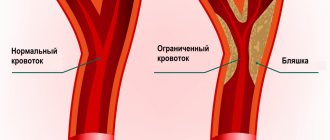Urologist
Mkrtchyan
Karen Gagikovich
13 years of experience
Candidate of Medical Sciences, member of the European Association of Urology and the Russian Society of Oncourologists
Make an appointment
Author of the article: Mkrtchyan Karen Gagikovich, Urologist, Candidate of Medical Sciences, member of the European Association of Urology and the Russian Society of Oncourologists
Balanoposthitis occurs only in the male population. The disease is quite widespread. According to statistics, this disease is diagnosed in 11% of the entire world population. The peculiarity of balanoposthitis is that the disease combines 2 diseases at once. With this ailment, the head of the penis and its foreskin are simultaneously affected. There is also separate balanitis, when the head of the penis itself becomes inflamed, and fasting, if only the foreskin of the organ becomes inflamed. However, if the nature of the disease is infectious, then the damage will quickly spread to both areas, since they are located next door.
Causes of balanitis
There are three groups of factors that provoke the development of penile balanitis.
- Infectious lesions (circinar balanitis) are caused by viruses (including papillomavirus), bacteria (chlamydia), fungi (yeast-like fungi of the genus Candida), in addition, pathological microflora (streptococci, treponema, gonococci);
- Allergic reactions to aggressive detergents, latex condoms, lubricant components, synthetic fabric of underwear.
- Systemic diseases of the body - diabetes mellitus, lichen sclerosus - can cause erosive, fungal and other types of balanitis. Sometimes balanitis on the penis appears after surgical interventions on the male genitals.
Balanitis in children in most cases is a consequence of poor hygiene of the external genitalia or phimosis - narrowing of the foreskin and, accordingly, incomplete opening of the glans penis. Allergic and contact dermatitis as a reaction to detergents and synthetic clothing also contribute to the development of the disease. The frequency of relapses may correlate with the incidence of other infectious diseases. If a child over eight years old has inflammation of the foreskin too often, it is advisable to examine him for the presence of diabetes.
Routes of infection
Depending on what exactly triggered the disease, chronic balanoposthitis comes in different types. This:
- candidal balanoposthitis;
- allergic;
- circinar;
- anaerobic;
- ulcerative
Accordingly, candidal balanoposthitis in men is provoked by fungi of the genus Candida. The circinar type of pathology is caused by chlamydia. The anaerobic type of disease is caused by gram-negative microorganisms. Ulcerative pathology is caused by fungi, staphylococci, etc.
Symptoms of balanitis (balanoposthitis)
Symptoms of balanitis can be grouped into three groups.
- Discomfort in the area of the head of the penis: burning, itching, pain, pain. Due to the increased sensitivity of the organ, the duration of sexual intercourse may decrease.
- The appearance of red spots or redness of the entire glans and foreskin, the skin becomes thinner (looks like parchment), the mucous membrane dries out, cracks and ulcers may form.
- Intense discharge, the volume of which significantly exceeds the normal amount of smegma (the secretion of the sebaceous glands of the mucous membrane of the head of the penis), up to soaking through the underwear.
The appearance of symptoms of even one group confirms the presence of balanitis.
Symptoms and signs of balanoposthitis
Symptoms are varied, but most often there are several phenomena that indicate the presence of pathology. So, balanoposthitis in men has the following symptoms:
- feeling of discomfort, itching and burning in the penis area;
- the foreskin is swollen and red;
- atypical discharge from the penis appears, which smells unpleasant and looks like pus;
- erosive processes on the surface of the genital organ;
- lymph nodes have increased in size;
- apathy, lethargy, chronic fatigue;
- frequent, recurrent headaches;
- increased body temperature;
- the head of the penis stopped opening due to swelling of the organ.
Balanoposthitis also has the following symptoms:
- blood rushes to the head of the penis;
- red-scarlet spots with clearly defined edges appeared;
- unpleasant discomfort when emptying the bladder and during intimacy, other manifestations of pathology.
Do you have symptoms of balanoposthitis?
Only a doctor can accurately diagnose the disease. Don't delay your consultation - call
Risk factors
The risk of developing balanitis continues throughout a man's life. At the same time, both non-compliance with the principles of personal hygiene and excessive care of the penis can cause a lack or excess of smegma. Urogenital pathologies (injuries, frenulum), weakened immunity (chemotherapy, taking hormones) can contribute to the development of the disease. The negative effects of chlorinated tap water, local contraceptives, and synthetic underwear should not be discounted.
Myths and dangerous misconceptions in the treatment of balanoposthitis
Some people believe that this disease is harmless and may go away on its own over time. There are also opinions that this pathology can be cured at home using folk remedies without any problems. However, both of these myths are dangerous for patients with balanoposthitis. The pathology not only does not go away on its own, but can also provoke a number of unpleasant complications. The longer a visit to a urologist is postponed, the more difficult and time-consuming it will be to treat the disease. Treatment with traditional methods cannot eliminate the root cause of the pathology. At best, it provides temporary minor relief. However, without contacting a specialist, the disease will progress and the patient’s condition will worsen.
Preparations for topical use
- Antibacterial agents: chloramphenicol (Syntomycin); sulfonamide (Streptocide ointment), tetracycline (Tetracycline ointment), metronidazole (Rozamet)
- Antiseptics: miramistin, chlorhexidine.
- Anti-inflammatory drugs with antipruritic effect: triamcinolone (Fluorocort)
- Agents for tissue regeneration and wound healing: chloramphenicol (Levomekol), dexpanthenol (Bepanten, Pantestin).
- Antimicrobial and antifungal: fluconazole (Flucorem); clotrimazole (Clotrimazole), omoconazole nitrate (Mycogal).
Treatment
Treatment of balanoposthitis is carried out using different methods:
- conservative methods;
- operation;
- treatment using alternative (traditional) medicine methods.
Clinics use the first 2 treatment methods. An individual treatment plan is drawn up for each patient.
Various medications are also prescribed by a specialist. Medicines are selected depending on the type of pathology and what infections it is caused by. For different types of balanoposthitis, treatment with tablets or ointments will be different. It happens that with balanoposthitis, an ointment for treatment is prescribed in conjunction with taking antibiotics.
Sometimes corticosteroids are prescribed, sometimes anti-inflammatory drugs. In some cases, zinc ointment treats balanoposthitis better than all other remedies. Therefore, it is important not to self-medicate, but to consult a specialist.
Recommendations and contraindications for balanoposthitis
The patient must maintain hygiene daily. It is important to treat the head of the penis with antiseptics, for example, Chlorhexidine. First of all, inflammatory processes are caused by infections in the partner. It is important that the woman goes to the gynecologist and gets cured. During the treatment period, you should not have unprotected contacts. It is recommended to give up bad habits and lead a healthy lifestyle. Urologists do not recommend wearing tight underwear for men.
If a man has balanoposthitis, the reasons may be different. The disease can be chronic for a long time. In an advanced stage, it leads to consequences including tissue death. The disease is treatable, but it is better to prevent its development. It is enough to follow the rules of hygiene and undergo regular preventive examinations.
Treatment of infections in men, treatment of infertility, solving problems with the prostate, urethritis - this is the specialty of our medical center.
Make an appointment. Make an appointment
How to treat?
Prevention of the disease is the best way to avoid serious consequences. And a significant role in this belongs to compliance with the rules of personal hygiene.
If you notice the first signs, it is important to immediately consult a doctor who will prescribe the correct treatment. A paid urologist will conduct an examination and prescribe appropriate treatment.
The private medical clinic “Doctor Anna” has all the necessary equipment to diagnose the disease and invites you to undergo an examination. Experienced specialists will diagnose, identify the causes of the disease and select an effective course of therapy.
Diagnostics
Before treating inflammation of the glans in men, it is necessary to undergo a complete diagnosis. To carry out effective treatment, it is important to establish the cause of the disease. To relieve inflammation of the head of the penis, it is necessary to conduct a series of studies. In order to determine the susceptibility of pathogenic flora to the planned treatment of inflammation of the head, biomaterials are collected. A blood test is performed for the presence of infections (hepatitis, HIV, syphilis), a general blood test, a general urinalysis and a biopsy of the affected areas.
Phimosis, narrowing of the foreskin
Phimosis is a terrible disease. A predisposing factor in the development of posthitis is congenital or acquired narrowing of the opening of the foreskin - phimosis . With a disease such as diabetes mellitus, or in the elderly and elderly, phimosis of the penis can develop even with regular high-quality washing of the glans. With balanitis, the foreskin is hyperemic and swollen, erosions and purulent plaque appear on its inner surface and head, a guy or a man is bothered by itching and pain when trying to have sexual intercourse. Sometimes the head is not exposed , the penis swells, becomes hyperemic, redness is noted, and lymphadenitis of the inguinal lymph nodes appears. A severe complication of phimosis is gangrene of the penis , which can result in complete tissue necrosis. The man is left without a penis. And this is already a difficult situation!
Redness on the glans, glans in men, boys and itching of the foreskin
If you notice severe redness on the glans , slight redness of the glans in men and boys, incomprehensible redness of the head of the penis , noticeable redness of the head of the penis, redness on the glans and itching of the foreskin, redness around the head of the skin of the head of the penis, redness on the head of the penis, near the glans, under the head, on the head of a child boy, child, redness of the tip of the head after sex, white coating, slight redness, flaking of the head, under the head of the penis, around the head of the penis, edge of the head, skin, redness and dryness, rash, itching, burning, call doctor so that he can prescribe effective treatment.
There are contraindications. Specialist consultation is required.
Photo: Shmeljov | Dreamstime.com\Dreamstock.ru. The people depicted in the photo are models, do not suffer from the diseases described and/or all similarities are excluded.
Related posts:
Testicular orchitis, testicular inflammation, orchitis treatment
Postitis: treatment, inflammation of the penis, how to treat postitis, itching on the head, burning of the head, pain, redness
Epididymitis, acute, chronic: treatment, how to treat inflammation of the epididymis, pain in the testicles
Balanitis, treatment of balanitis in Saratov, how to treat balanitis
Urethritis, treatment of urethritis, inflammation of the urethra
Comments ()
Balanoposthitis
Andrey
May 21, 2021 at 10:56 pm
Good afternoon, doctor! I have a strange situation. So I had to look for advice on the Internet. There is inflammation on the head. Nothing else really worries me. Now I will try to explain the situation. About 7 years ago there was a suspicion of candidiasis, they treated it, it seems to have gone away. Last summer there were spots on the head, they didn’t bother me, they didn’t itch, they were just there, there was no smell and no problem either. I went to the dermatologist, but there were still spots on the head (the one on the shoulders








